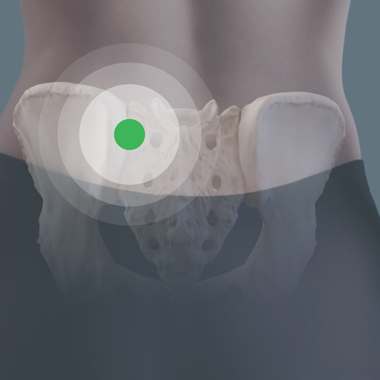5 Warning Signs of Chronic Sacroiliitis
Are you experiencing persistent lower back pain that won’t go away? It could be a sign of chronic sacroiliitis. The SI joint, located between the sacrum and the ilium bones in the pelvis, plays a crucial role in providing stability and absorbing shock during movement. When this joint becomes dysfunctional, it may lead to chronic pain and discomfort. Let’s discuss five warning signs indicating chronic SI joint pain and how the LinQ SI Joint Stabilization System by PainTEQ may provide relief.

1. Persistent Lower Back Pain
Chronic SI joint pain often manifests as persistent lower back pain. This pain is typically localized on one side of the lower back, just above the buttocks. It may worsen with prolonged sitting or standing and can radiate into the hips, groin, or thighs. If you’ve been experiencing consistent lower back pain for over three months, it’s crucial to consider the possibility of SI joint dysfunction. Unfortunately, this pain is often confused with other conditions, such as a herniated disc or sciatica, and may be difficult to diagnose correctly. Therefore, speaking with your doctor or a pain specialist for an accurate diagnosis is important.
2. Limited Range of Motion
Impaired range of motion is another common warning sign of chronic SI joint pain. If you find it challenging to perform certain movements, such as bending forward, twisting, or crossing your legs, it could be due to SI joint dysfunction. This limited range of motion is often accompanied by stiffness and instability in the lower back and pelvic region. Moreover, performing certain activities such as lifting, carrying, or running can become difficult. In severe cases, people with chronic SI joint pain may even need assistance when standing or walking.
3. Unilateral Buttock Pain
SI joint dysfunction may also cause pain in the buttocks. You may experience a deep ache or sharp pain in the buttock area, which may extend down the back of your leg (resembling sciatica). If this pain is present on one side and persists, it’s crucial to consider SI joint dysfunction as a potential cause. The Fortin finger test can help determine if the SI joint is the source of your pain.
4. Pelvic Instability
SI joint dysfunction may lead to pelvic instability, causing discomfort and an abnormal gait. You may feel as if one leg is longer than the other or notice a shift in your pelvic alignment. This imbalance may make it challenging to maintain proper posture, potentially leading to compensatory issues in other areas of the body. If you’ve noticed changes in your posture or gait, it’s essential to consult with a healthcare professional to determine if SI joint dysfunction is the underlying cause.
5. Difficulty Sleeping
Chronic sacroiliitis may significantly impact your sleep quality. Finding a comfortable position to rest may become increasingly challenging due to the pain and discomfort. SI joint pain may worsen when lying on the affected side or flat on your back. If you’re experiencing difficulty sleeping or are constantly waking up due to lower back or buttock pain, it may indicate an underlying SI joint issue.
LinQ: A Treatment Option for Chronic Sacroiliitis
PainTEQ offers the LinQ SI Joint Stabilization System, a revolutionary treatment designed to address chronic sacroiliitis. The LinQ system is designed to provide long-term relief from chronic SI joint pain by stabilizing the joint and promoting stability. If you believe you have chronic SI joint pain, contact us today to find a provider in your area.
If you are a provider looking to offer the LinQ system to your patients and enhance your practice, partner with PainTEQ. Join us and be part of the future of pain relief. Contact us today for more information on the advantages of partnering with PainTEQ.



